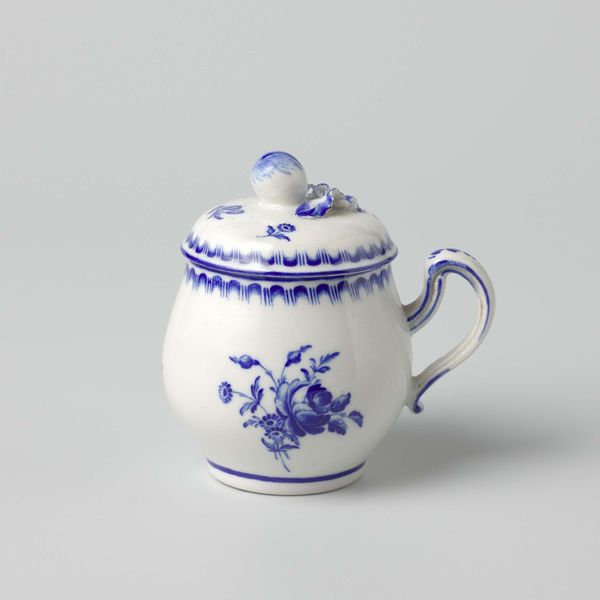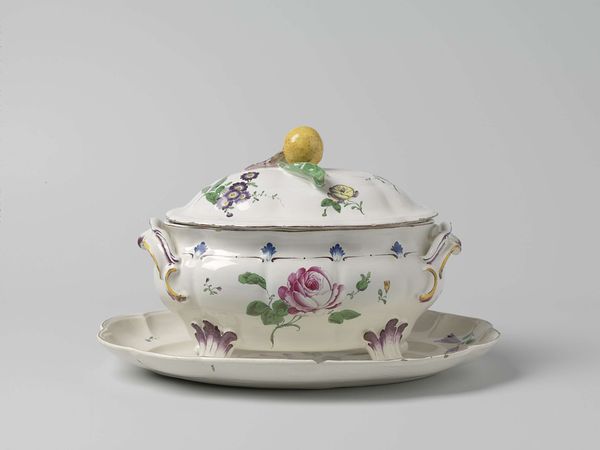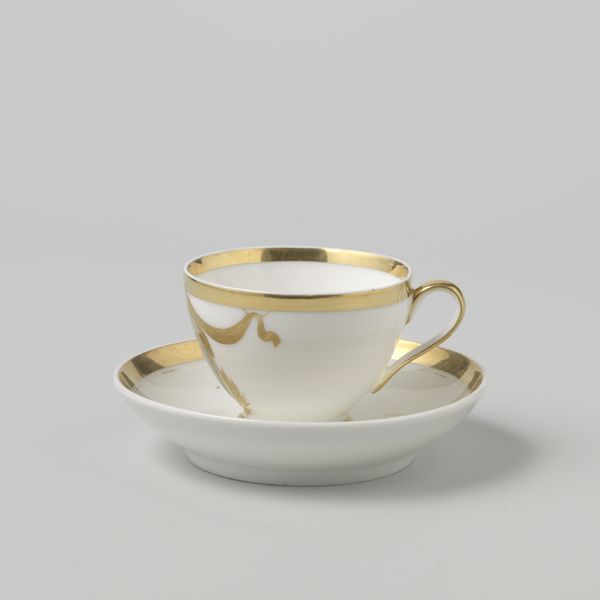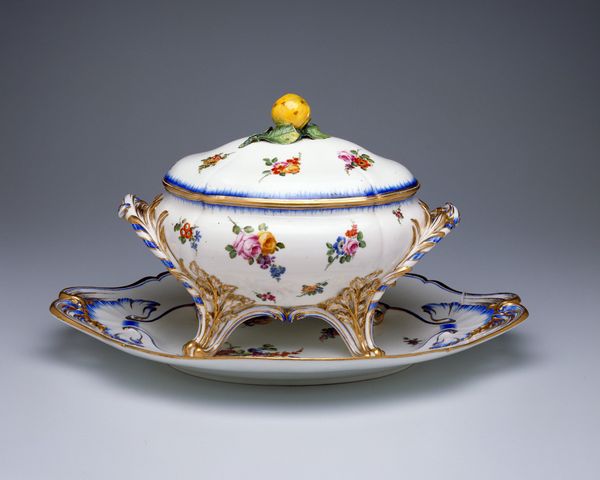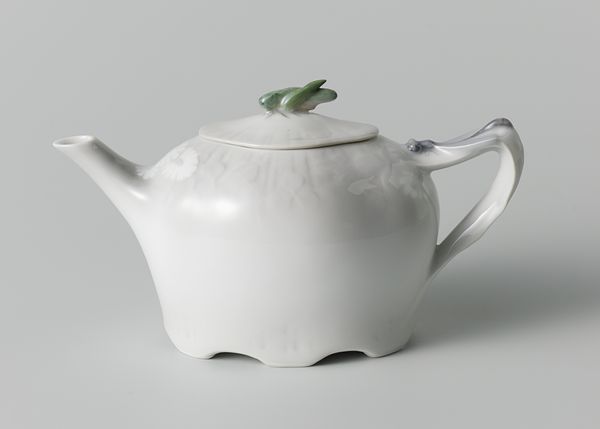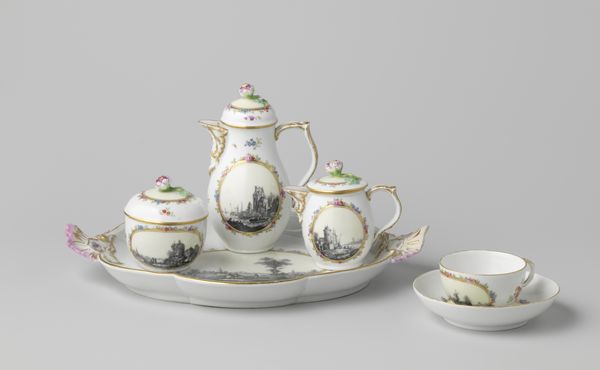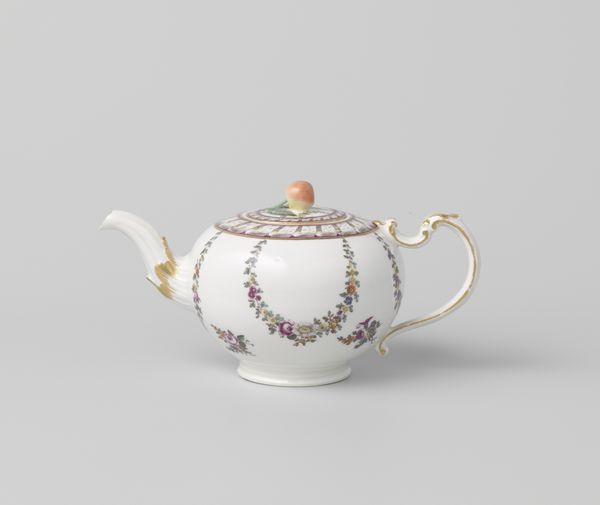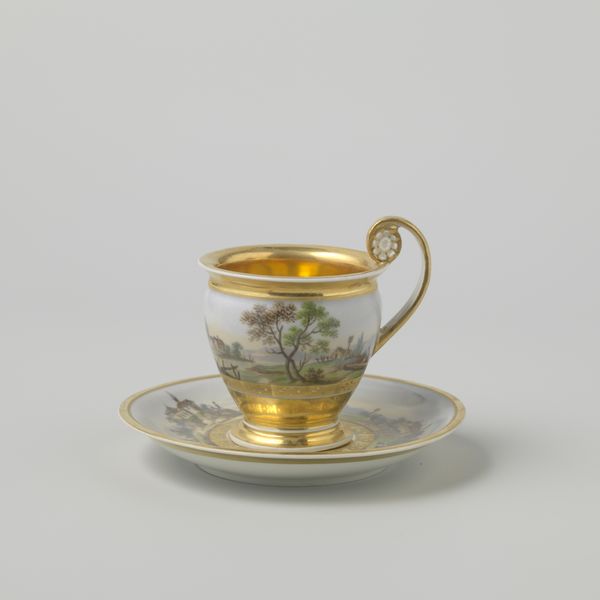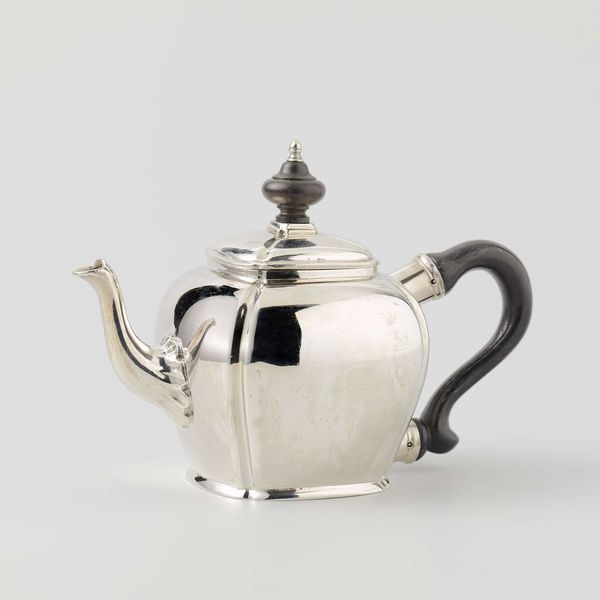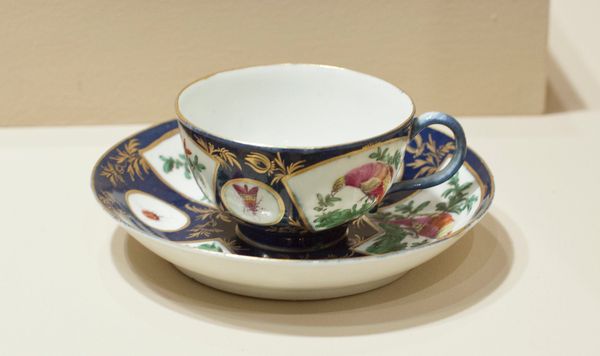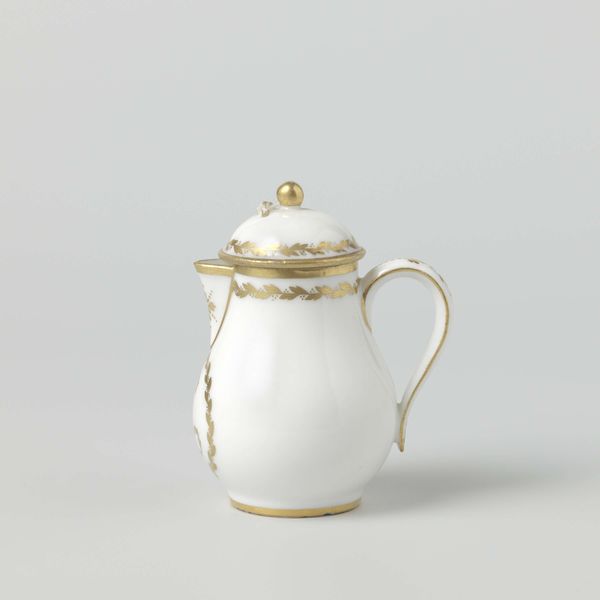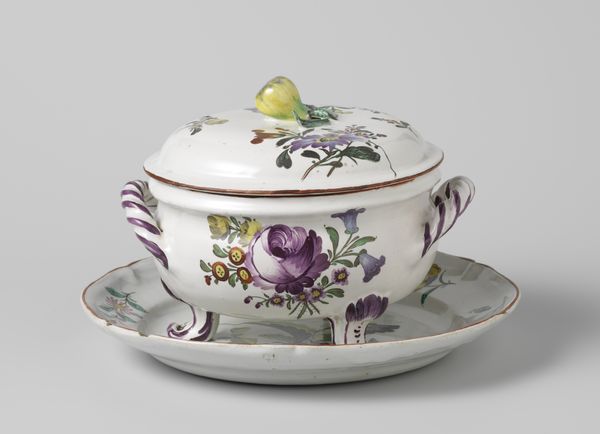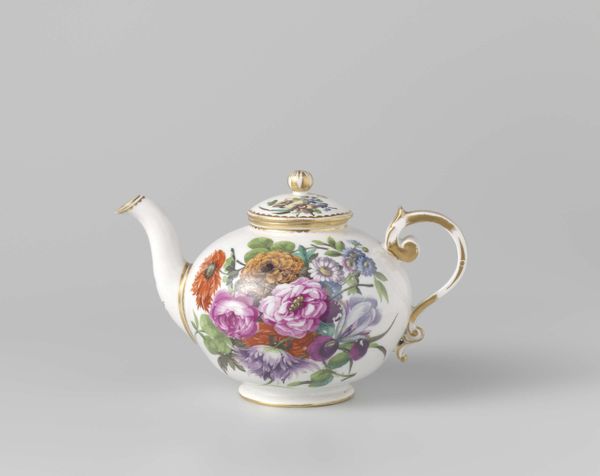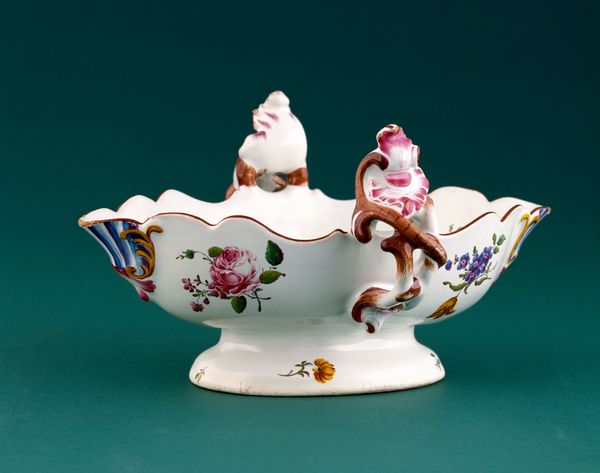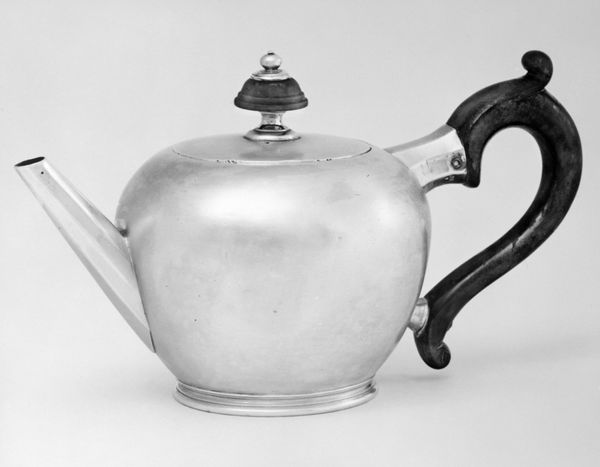
painting, acrylic-paint, impasto
#
painting
#
acrylic-paint
#
impasto
#
orientalism
Copyright: Modern Artists: Artvee
Editor: This vibrant painting, "Cup studies 2" by Valentina Remenar, is rendered in acrylic paint with an impasto technique. The bold color palette, focusing on blue, gold, and orange, immediately strikes me. What compositional elements draw your eye? Curator: The artist’s primary focus is clearly on the arrangement of forms. Observe how the circular shapes of the cherries are echoed in the cup's design, the saucer, and even the spoon's embellishment. The play of light on these curved surfaces creates a visual rhythm. Do you notice how the background's flatness contrasts with the dimensional quality of the central still life? Editor: I see that contrast. It almost feels like the cup and fruit are floating in this space. I’m also intrigued by the highly decorative details; it makes the image seem so luxurious. Is that intentional? Curator: The artist appears fascinated by pattern and texture. Note the intricacy of the gold ornamentation against the deep blue of the cup and saucer, a visual pairing rooted in orientalist styles. The thick application of paint, particularly noticeable in the highlights, further emphasizes texture and light. It's an interplay between surface and depth. Does this layering add another dimension to your viewing of the artwork? Editor: It really does. Initially, I just saw a pretty painting, but now I'm noticing how each element contributes to a cohesive visual experience. It's more complex than I initially thought. Curator: Indeed. By analyzing the relationships between form, color, texture, and pattern, we discover how Remenar transforms a simple still life into an intricate, self-contained visual world. Editor: This detailed exploration has allowed me to better understand Remenar's use of formal devices. The way you decoded each aspect provides a fresh understanding of what makes it art!
Comments
No comments
Be the first to comment and join the conversation on the ultimate creative platform.
